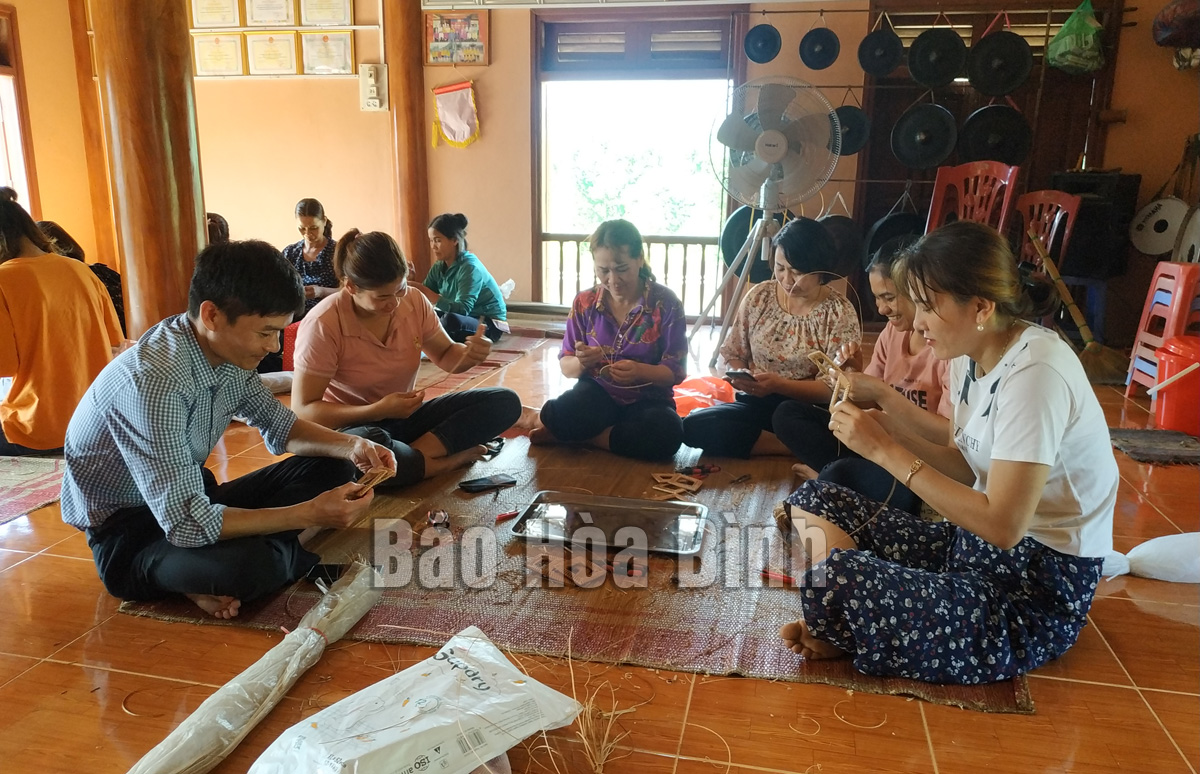
(HBO) - In recent years, vocational training for rural workers in Kim Boi district has received attention from local administration, thus producing positive results, helping local residents find jobs, increase their income and improve their lives. This is an important foundation for the district to fulfill the criterion of employment and poverty reduction under the new-style rural area building programme.
A training course
on rattan weaving in Kim Boi district’s Xuan Thuy commune attracts many women.
Implementing a project on vocational training for rural workers, the district
directs relevant agencies, communes and townships to devise and implement
vocational training plans associated with job creation for rural labourers.
Vocational training establishments provide counseling for
labourers in selecting occupations that are relevant to their conditions and
capacity and meet the labour market's demand. Priority is given to training for
welfare policy beneficiaries, people with meritorious services to the
revolution, poor and near-poor households, and ethnic minority households.
Nguyen Van Thuy, Deputy Director of Kim Boi district's Centre for Continuing
Education, said that the centre has implemented many solutions such as
promoting communication activities to raise awareness and proactiveness of
workers in looking for jobs and changing their occupations. It has developed
vocational training programmes based on the need of each target group and
strengthened linkages with enterprises in the recruitment of workers that have
undergone training.
Twenty-five vocational training courses with nearly 800 participants were
organised by the centre in 2022 under Project 1956. Over 80% of them are ethnic
minorities.
Up to 90% of attendants who complete vocational training classes got jobs and
knew how to apply their acquired knowledge to their production and business,
contributing to increasing their income and stabilising their lives.
Under the vocational training project for rural workers in the 2010 – 2020 period,
the district held 248 training classes for 7,920 rural workers at a total cost
of over VND 6 billion.
Having undergone training, workers got stable jobs and raised their families'
income.
The annual per capita income increased from 16.5 million VND (700 USD) in 2016
to 42 million VND in 2022. The rate of poor households in the locality dropped
by an average 5.06% a year. The rate of trained workers in the district reached
61%, of which those with certified certificates hit 24%.
In the future, agencies in the district will continue to expand vocational
training models for rural workers, exploiting the locality’s potential to
expand production and improve the living standards of local residents,
contributing to sustainable economic development in the district./.
More than just an information technology teacher, Bui Van Nien is an inspiring figure who has nurtured the scientific curiosity and creative spirit of students in Vietnam’s ethnic minority communities.
Da Bac is the most disadvantaged mountainous district in Hoa Binh province, with ethnic minorities accounting for about 90% of its population. Over the past years, the district has mobilised resources to implement ethnic policies to improve the quality of life of local people.
In recent years, Hoa Binh province has consistently prioritised the protection, care, and education of children, particularly those from ethnic minorities and disadvantaged backgrounds, by creating a safe, healthy, and nurturing environment for their all-round development.
The Steering Committee for Tobacco Harm Prevention and Control of Hoa Binh province, in coordination with the Tobacco Harm Prevention and Control Fund, held a ceremony on May 28 in response to the World No Tobacco Day (May 31) and the National No Tobacco Week (from May 25 to 31). The event was chaired by Nguyen Van Toan, Standing Vice Chairman of the provincial People’s Committee and head of the Steering Committee.
Since 2021, the Center for Industrial Promotion and Industrial Development Consulting (CIIDC) under the Department of Industry and Trade has been implementing a school lighting model as part of the plan for using energy efficiently and economically in Hoa Binh Province in the pẻiod of 2021 - 2025. This model not only aims to improve the learning conditions and enhance the education quality, but it also promotes the message of energy saving, energy security, environmental protection and contributes to the goals of socio-economic development.
In the 2024 - 2025 school year, the entire Hoa Binh provincial education sector includes 520 educational institutions and schools. Among them are 13 ethnic boarding schools with 153 classes and 4,487 students. Four of these schools have met national standards, reaching 30.7 percent.



